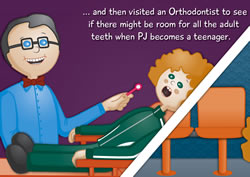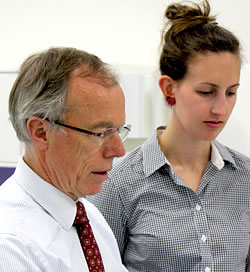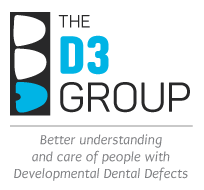ORTHODONTIC ASPECTS OF MOLAR HYPOMIN
Orthos operate at the front line of severe Molar Hypomin

Why does D3G advocate that orthos need to be savvy about Molar Hypomin? Our reasons fall under three perspectives – yours, your patients' and that of healthcare economics. As an ortho you can expect to see more severe Hypomin cases than most since the vast majority of GPs and paediatric specialists will seek orthodontic advice on what to do with "dodgy 6s". In helping the referrer decide "should I extract or retain?", your primary input is to predict the orthodontic consequences of extraction in context of the individual's overall status – tricky as it can be, this is your core business of course. However in collaboratively reaching a good decision, you also need non-core appreciation of the prognostic subtleties of Molar Hypomin – how well might the teeth stand up to restoration and wear, what's the chance they'll fail and need extracting in a few years? It's simply wrong to assume Hypomin teeth will behave the same restoratively as normal teeth – and you may well already know this from difficulties getting brackets to bond not to mention safe debonding.
Similar needs for a well-rounded understanding arise when you deal with the patient's perspective on Molar Hypomin. What does it mean for them orthodontically, might orthodontic treatment take longer and cost more if there were to be extractions? What onus on oral hygiene does the favoured option bring? And would it make the life-wrecking pain go away, and if so how good a reason is that? – are there good alternatives for pain control with Molar Hypomin?
These two aspects then translate out to the economic perspective. In assessing overall disease burden of Molar Hypomin (and caries), health economists need to know how many ortho treatments are done solely as a result of Hypomin-related extractions. Do such treatments carry additional cost, and how does this all stack up against the costings for restorative alternatives? And simply, from a budget-driven public-health perspective, is it cheaper to extract or retain? While perhaps not so relevant to your daily practice, these community-level issues do impact us all as taxpayers and fellow citizens.
Key literature
- Orthodontic perspective on Molar Hypomin – Williams 2003, Kilpatrick 2009, Ong 2010, Firth 2019
- Extraction timing – Cobourne 2014, Eichenberger 2015, Saber 2018, Patel 2017, Ashley 2019
- Orthodontic outcomes – Mejare 2005, Jalevik 2007, Mathu-Muju 2016, Brusevold 2022
Molar Hypomin needs orthodontically-focussed research
Most of the questions asked above are "prime subjects for research" (the glass-half-full view). Less euphemistically, this is a highly under-researched area stemming largely from under-recognition of the problem. D3G hopes this educational website will spur some ameliorative activity forthwith!
Current D3G Research

D3G researchers are tackling the Molar Hypomin problem at all levels from population through to basic biochemistry and the like (see Researcher Directory). Perhaps as an ortho you feel inclined to help out?
A soon-to-be-published study with orthodontic focus is:
- impact of Molar Hypomin on Ortho: practitioner & patient perspectives – Schneider/D3G team (contact us for more info)

